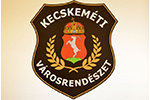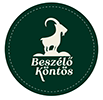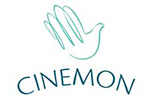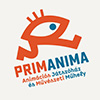The Films of the 17th KAFF - From a preselector's perspective
The Hungarian programme of the 17th Kecskemét Animation Film Festival in 2025—marking its jubilee edition—is once again impressively rich, reflecting the diverse and experimental spirit of Hungarian animation creators. The pre-selection jury faced a difficult task, having to choose from over 300 submitted Hungarian films those that would be included in the competition or information programmes. This high number clearly demonstrates that Hungarian animation remains a vibrant, active, and internationally competitive professional community.
Feature Films: Boundary-Pushing Nostalgia and a Reimagined Classic Concept
Two noteworthy feature-length films have been selected for the Hungarian competition programme. Pelikan Blue, an animated documentary by László Csáki, sensitively and humorously explores the phenomenon of "train ticket" border crossings in the 1990s, combining archival footage with a distinctive visual style. With its unique tone and social reflection, the film is not only nostalgic but also serves as an important historical document—one that has already gained success at several international festivals.
The other feature film selected for the competition is Csongor és Tünde (The Quest), produced by Cinemon Studio and directed by Csaba Máli and Zsolt Pálfi. This reinterpretation of a classic Hungarian literary work is an animated adaptation of Mihály Vörösmarty’s play, based on original character designs by Attila Dargay. It represents an exceptional artistic undertaking: bringing to life one of the pinnacles of Hungarian Romanticism using contemporary animation techniques while remaining faithful to Dargay’s aesthetic vision.
Short Films: Fresh Voices and Visual Languages
The short film competition programme offers an exciting snapshot of the current state of Hungarian animation. Works such as Vegan Mayo by Luca Tóth, Cipők és paták (Shoes and Hooves) by Viktória Traub, and Capriccio by Gábor Ulrich continue to explore the boundaries between experimental and auteur animation. The programme also features the premiere of Kutyafül, a new auteur animation by Péter Vácz, just two weeks ahead of its appearance in the official competition at the Annecy International Animation Film Festival.
Special attention is due to Wish You Were Ear by Mirjána Balogh and Utolsó dobás (The Last Drop) by Anna Tőkés, both created as diploma films at the Moholy-Nagy University of Art and Design (MOME). Wish You Were Ear premiered in February at the 75th Berlin International Film Festival, where it was awarded the Crystal Bear. Through an absurd yet sensitive visual language, the film explores themes of loss and letting go, framed as a relationship metaphor. Anna Tőkés’s film began its successful festival journey with a world premiere in Sarajevo and, following its screening in Kecskemét, will compete in the student film section at Annecy. Having received numerous festival invitations, the film stands as further proof of the high standard of Hungarian animation education on the international stage.
Student Films: A Strong Line-up from Emerging Talents
The student film section received a large number of submissions, clearly demonstrating that in addition to institutions based in and around Budapest—such as METU, Illyés, and Corvin—students from regional schools in cities like Eger and Szombathely are also producing increasingly high-quality work. This section is consistently one of the freshest and most experimental segments of the festival, offering insight into the emotional landscapes of young creators, reflecting their inner worlds, including anxieties and fears, elaborating into their artistic works.
Applied Animation: Visual Creativity in the Service of Commissioned Work and Social Impact
This year, the selection of applied animation films proved exceptionally strong, allowing the pre-selection jury to compile two separate competition blocks. The programme in the applied animation block features well-known names such as Áron Gauder, László Csáki, and Luca Tóth, who, through commercials, music videos, and educational projects, demonstrate how the language of artistic animation can thrive even within the framework of commissioned work. Audiences will also become acquainted with the applied projects of emerging talents like Vivien Hárshegyi, Zénó Mira, and Bence Hlavay. Within the special series 110 Years of Hungarian Animation, several young creators have offered fresh reflections on the country’s rich animation heritage.
Zsuzsanna Vincze – Member of the Pre-selection Jury for Hungarian Films














































